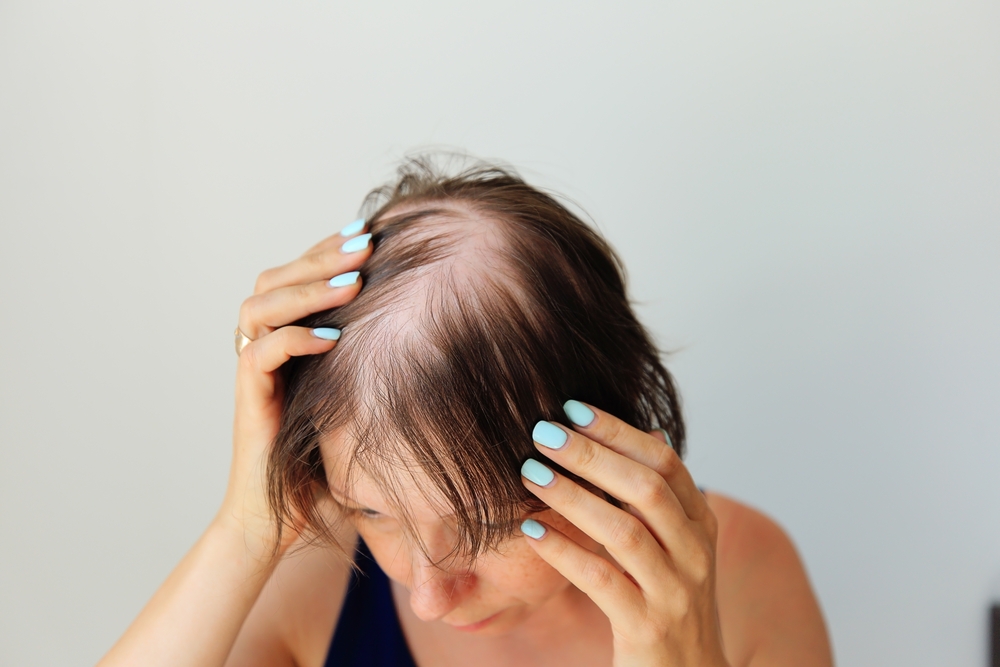Surgery can often change your life for the better, especially if it’s for something that is threatening your well-being or disrupting your lifestyle. However, some surgeries can lead to a series of inconvenient side effects. One example would be your hair falling out.
An average of 57 percent of patients experience alopecia after surgery, especially the bariatric and metabolic types. Luckily, there are ways for you to keep things under control and reduce hair thinning and bald spots. Keep reading to find out why surgery affects your hair and what you can do to restore it!
What Causes Hair Loss After Surgery?
Hair loss after surgery is a very common phenomenon, and there is a good explanation for it. When your hair grows, it goes through certain cycles. First, it grows and then enters a resting stage. After that, it enters the shedding stage, after which regrowth occurs. The entire length of hair represents one cycle, and for some people, this can last for years.
We all shed about 50 to 150 hairs a day. However, certain stressful events can prematurely send your hair follicles into a shedding phase, causing you to lose more hair than usual. This can be caused by many things like anesthesia, medication (chemotherapy), and even stress. Pressure alopecia can also cause your hair to shed from certain areas, leaving you with bald spots.
Milder hair loss can be solved with regenerative medicine for hair loss, platelet-rich plasma (PRP), and platelet-rich fibrin (PRF). However, when the hair loss is more significant – for example, when it’s caused by cancer – the more appropriate option is a hair transplant. This is a potentially permanent solution to restore your hair in areas where it refuses to grow.

Top Options for Hair Restoration
If your surgery left you with significant thinning or balding areas, two options are likely to bring great results. Whether you are looking for a female or male hair transplant, the following procedures can help:
-
Follicular Unit Extraction (FUE)
If you are looking to add more thickness to thinning hair, follicular unit extraction (FUE) may be a good option for your needs. For this procedure, the donor area will be shaved or trimmed very short, and a special puncture wound will be used to take the hair follicle out. It requires a fair amount of precision, but it is minimally invasive and least likely to leave a scar.
This option is generally recommended if you have localized balding or hair thinning. Since only small puncture wounds are left behind, the recovery is shorter, and you will be less likely to feel discomfort. Individuals who are prone to scarring would typically benefit from the FUE procedure.
-
Follicular Unit Transplantation (FUT)
If you usually keep your hair long and are not concerned about scarring, follicular unit transplantations (FUT) might be a more sensible solution. With this procedure, a strip of skin containing follicles is harvested from areas where your hair is thicker. The follicles are then taken off the skin and processed, readying them for transplantation.
This procedure is much simpler to perform in comparison to FUE, which is why the price per hair graft transplant is lower. That being said, since it allows for multiple graft harvesting, it is the more efficient option for major hair restoration.
The Bottom Line
While hair loss is a common side effect of some types of surgeries, it does not mean you have to live with thinning hair forever. You just need to use the right procedure to give it more fullness. Contact Sanctuary Medical Aesthetic Center to set up your hair restoration appointment!
For more information about post-surgery hair loss and the best ways to fix it, you can contact Sanctuary Medical Aesthetic Center at 561-886-0970. We can offer the guidance you need to make a calculated decision. Alternatively, you can fill out our online contact form, and we will get in touch with you for an appointment.

































































